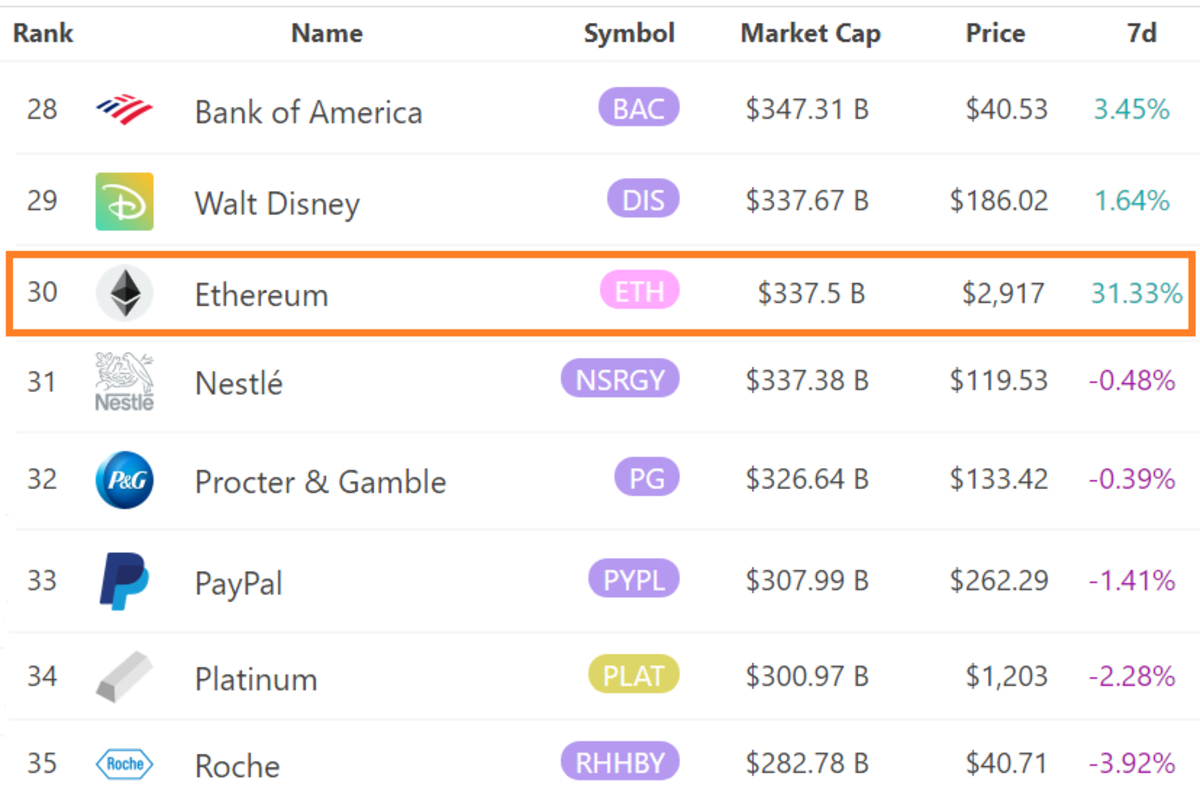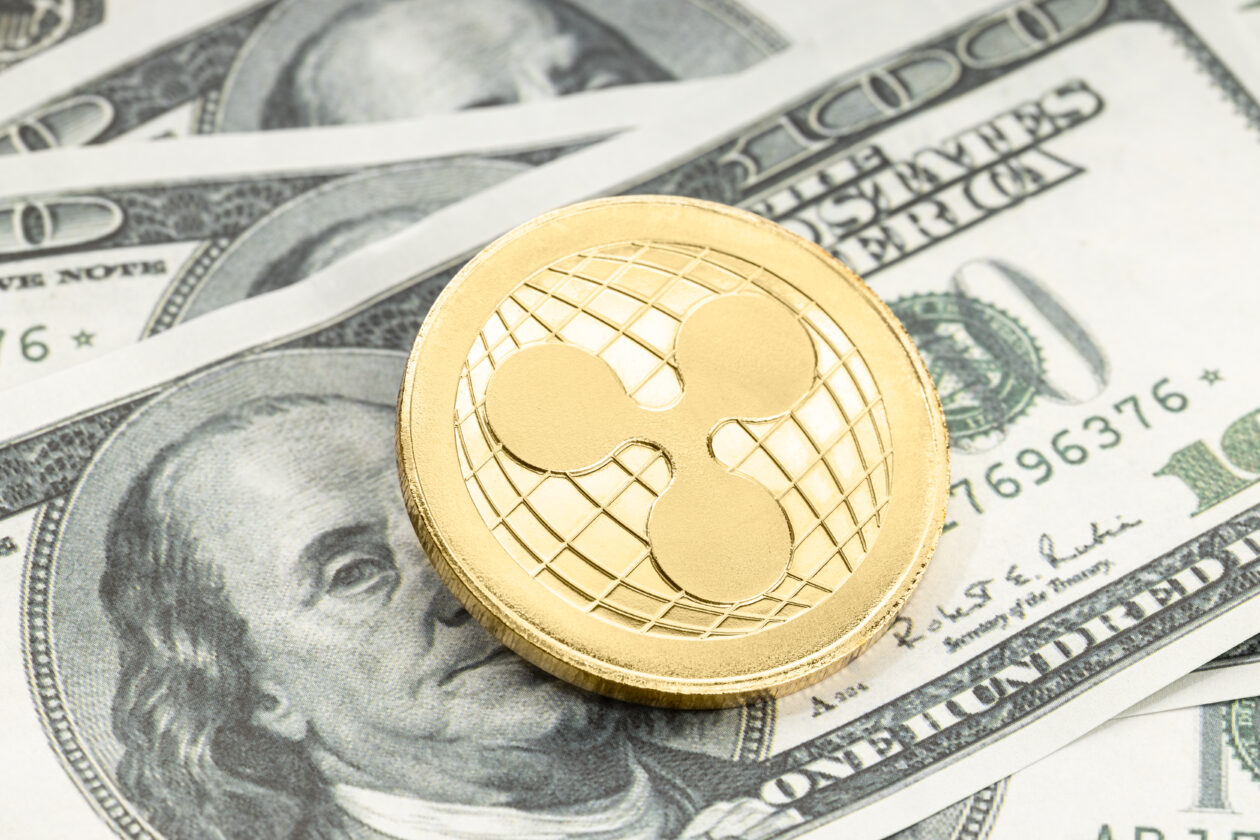Introduction
Welcome to the world of cryptocurrency, where market cap plays a crucial role in understanding the value and potential of a digital asset. Market capitalization, also known as market cap, is a key metric used to measure the size and significance of a cryptocurrency in the broader market.
As the cryptocurrency market continues to grow and evolve, investors, traders, and enthusiasts are increasingly paying attention to market cap as an indicator of a cryptocurrency’s worth. Understanding how market cap is calculated and its significance in the world of digital currencies is essential for anyone interested in participating in this exciting and dynamic market.
In this article, we will delve into the concept of market cap in cryptocurrency, exploring its definition, calculation, and its significance in evaluating the performance and viability of different cryptocurrencies. We will also address common misconceptions about market cap and discuss the factors that can influence it.
Moreover, we will compare market cap with other financial metrics to gain a deeper understanding of its role in the cryptocurrency market. Lastly, we will provide an interpretation and analysis of market cap data to help you make informed decisions when it comes to investing or trading cryptocurrencies.
So, whether you are a novice looking to learn more about cryptocurrencies or an experienced investor seeking to enhance your understanding of market dynamics, this article will serve as a comprehensive guide to understanding market cap in the world of cryptocurrency.
Definition of Market Cap
Market capitalization, commonly referred to as market cap, is a financial metric used to measure the value and size of a company, asset, or in this case, a cryptocurrency. It represents the total market value of a cryptocurrency by multiplying the current price per unit by the total number of units in circulation.
Market cap provides a standardized measure to compare the relative sizes of different cryptocurrencies. It is often used as an indicator of a cryptocurrency’s popularity, influence, and overall market position. The larger the market cap, the more significant the cryptocurrency is considered within the market.
Market cap can be classified into three main categories:
- Large Cap: Cryptocurrencies with market caps in the billions of dollars are classified as large-cap cryptocurrencies. These are often well-established, widely recognized cryptocurrencies like Bitcoin and Ethereum. Large-cap cryptocurrencies tend to be more stable compared to their smaller counterparts.
- Mid Cap: Cryptocurrencies with market caps in the hundreds of millions of dollars fall into the mid-cap category. These cryptocurrencies may have gained some popularity and recognition but are not as established or widely traded as large-cap cryptocurrencies. They often have potential for growth and may exhibit higher volatility.
- Small Cap: Cryptocurrencies with market caps below $100 million are considered small-cap cryptocurrencies. These are often newer or niche cryptocurrencies with limited trading volume. Small-cap cryptocurrencies have the potential for higher returns but also carry higher risks due to their relatively low market liquidity.
It’s important to note that market cap alone does not provide a complete picture of a cryptocurrency’s value or potential. While it gives us a rough estimate of a cryptocurrency’s size, other factors such as trading volume, price history, development team, and adoption rate also play significant roles in evaluating a cryptocurrency’s worth.
Next, let’s explore how market cap is calculated in the world of cryptocurrency.
How Market Cap is Calculated in Cryptocurrency
Calculating the market cap of a cryptocurrency is a relatively straightforward process. It involves multiplying the current price per unit of the cryptocurrency by the total number of units in circulation.
The formula for calculating market cap is as follows:
Market Cap = Price per Unit * Total Circulating Supply
The price per unit is determined by the current market price of the cryptocurrency. This can be obtained from various cryptocurrency exchanges or financial platforms that provide real-time price data. It’s important to note that the price used for calculating market cap should reflect the most accurate and up-to-date information available.
The total circulating supply refers to the total number of units of the cryptocurrency that are currently in circulation. This excludes any units that are held by the development team, locked up in contracts, or otherwise inaccessible for trading. The circulating supply can typically be found on cryptocurrency data websites or within the project’s whitepaper or official documentation.
Once the price per unit and the total circulating supply are determined, they are multiplied together to obtain the market cap of the cryptocurrency.
For example, suppose a cryptocurrency has a current price per unit of $10 and a total circulating supply of 10 million units. The market cap would be calculated as:
Market Cap = $10 * 10,000,000 = $100,000,000
In this example, the market cap of the cryptocurrency would be $100 million.
It’s important to note that market cap is a dynamic metric that can fluctuate as the price per unit and the circulating supply of a cryptocurrency change. Therefore, it’s crucial to consider the most up-to-date information when calculating and analyzing market cap.
Now that we understand how market cap is calculated, let’s explore the significance of market cap in the world of cryptocurrency.
Significance of Market Cap in Cryptocurrency
Market cap holds significant importance in the world of cryptocurrency as it serves multiple purposes that help investors, traders, and enthusiasts gauge the value, popularity, and potential of a cryptocurrency. Here are some key reasons why market cap is significant:
- Indicator of Market Dominance: Market cap provides a measure of a cryptocurrency’s dominance within the overall cryptocurrency market. Cryptocurrencies with higher market caps are often considered more established, influential, and trustworthy.
- Comparison between Cryptocurrencies: Market cap allows for easy comparison between different cryptocurrencies. It provides a standardized metric to assess the relative size and popularity of cryptocurrencies, enabling investors to make informed decisions based on their risk tolerance and investment goals.
- Investment Opportunities: Market cap can help identify potential investment opportunities. While larger market cap cryptocurrencies tend to be more stable, smaller market cap cryptocurrencies may offer higher growth potential. Investors can use market cap as a tool to diversify their portfolios based on their investment strategies.
- Benchmark for Performance: Market cap serves as a benchmark to evaluate the performance of a cryptocurrency over time. By tracking changes in market cap, investors can gain insights into the market sentiment, adoption rate, and overall interest in a cryptocurrency.
- Market Liquidity: Market cap is closely related to the liquidity of a cryptocurrency. Cryptocurrencies with higher market caps usually have higher trading volumes and greater market liquidity. This provides investors with the flexibility to buy or sell their positions without significantly impacting the price.
- Perception of Value: Market cap can influence the perception of a cryptocurrency’s value. Higher market cap cryptocurrencies often enjoy more mainstream recognition and acceptance, which can contribute to increased investor confidence and widespread adoption.
While market cap is a valuable tool, it should not be the sole factor influencing investment decisions. Other fundamental and technical analysis factors should also be considered to gain a comprehensive understanding of a cryptocurrency’s potential.
Now that we understand the significance of market cap, let’s address some common misconceptions surrounding this metric.
Common Misconceptions about Market Cap
Market cap in cryptocurrency is a widely discussed metric, but it is also subject to various misconceptions. Let’s address some common misconceptions about market cap:
- Market Cap Reflects the Value Invested: One common misconception is that market cap reflects the amount of money invested in a cryptocurrency. However, market cap only represents the total value of all the units of a cryptocurrency in circulation, not the actual amount of money invested. The market cap can fluctuate based on factors such as price volatility and changes in circulating supply.
- Market Cap Determines the Future Performance: Another misconception is that market cap alone determines the future performance of a cryptocurrency. While market cap is an important metric, it does not guarantee profitability or success. Other factors such as project development, adoption rate, and market demand also play significant roles in determining a cryptocurrency’s performance.
- Market Cap is a Fixed and Immutable Metric: Some people mistakenly believe that market cap is a fixed and unchangeable value. In reality, market cap is a dynamic metric that can change throughout the market’s trading sessions. Price fluctuations and changes in circulating supply can lead to fluctuations in the market cap of a cryptocurrency.
- Market Cap Represents the Total Worth: It is crucial to note that market cap does not represent the total worth or value of a cryptocurrency in terms of its utility or technological capabilities. Market cap primarily indicates the perceived value by the market at a given point in time. Separate research and analysis are necessary to understand the underlying technology and potential of a cryptocurrency.
- Market Cap Dictates the Ranking: While market cap is often used to rank cryptocurrencies, it should not be the sole determinant of a cryptocurrency’s ranking or importance. Other factors such as trading volume, community support, and market stability also influence the ranking of cryptocurrencies.
Understanding these misconceptions is essential for accurate and informed analysis of market cap. By recognizing the limitations and nuances associated with market cap, market participants can make more well-rounded decisions when it comes to investing and trading cryptocurrencies.
Now that we have addressed some common misconceptions, let’s explore the factors that can influence market cap in the world of cryptocurrency.
Factors Influencing Market Cap
Several factors can influence the market cap of a cryptocurrency. Understanding these factors is crucial for assessing the potential growth and stability of a cryptocurrency. Here are some key factors that can influence market cap:
- Price Volatility: Price volatility can significantly impact the market cap of a cryptocurrency. Sharp increases or decreases in price can lead to substantial fluctuations in market cap. Higher price volatility may attract more speculative traders and investors, potentially increasing the market cap.
- Trading Volume: The trading volume of a cryptocurrency is another crucial factor influencing market cap. Higher trading volumes indicate greater liquidity and market activity, contributing to a higher market cap. Increased trading volume can result from increased investor interest, positive news, or the launch of new products or features.
- Adoption and Use Case: The adoption and use case of a cryptocurrency play a significant role in determining its market cap. Cryptocurrencies that are widely accepted and used in various industries or have partnerships with established companies tend to have higher market caps. A strong use case and widespread adoption can drive demand and increase the perceived value of the cryptocurrency.
- Competition and Market Sentiment: The competitive landscape and market sentiment can impact the market cap of a cryptocurrency. Factors such as the emergence of new competitors, regulatory developments, and market trends can influence investor perceptions and affect the demand for a specific cryptocurrency.
- Technology and Development: The technology and development behind a cryptocurrency are critical considerations for its market cap. Innovative features, scalability, security, and ongoing development efforts can attract investor confidence and contribute to higher market caps. Regular updates and improvements can enhance a cryptocurrency’s reputation and increase its market value.
- Media Coverage and Public Perception: Positive media coverage and public perception can have a significant impact on the market cap of a cryptocurrency. News articles, social media discussions, and endorsements from influential individuals or organizations can influence investor sentiment and attract new participants to the market, potentially increasing market cap.
It’s important to note that these factors interact with each other and can vary in significance depending on the specific cryptocurrency and market conditions. Evaluating these factors alongside market cap provides a more comprehensive understanding of the investment potential of a cryptocurrency.
Now that we have explored the factors influencing market cap, let’s discuss the limitations associated with this metric.
Limitations of Market Cap
While market cap is a widely used metric in the cryptocurrency market, it is important to recognize its limitations. Understanding these limitations can help avoid potential misinterpretations and provide a more nuanced perspective on a cryptocurrency’s value. Here are some key limitations of market cap:
- Price Manipulation: Market cap solely relies on the price of a cryptocurrency, which can be susceptible to manipulation. In some cases, malicious actors or large holders of a cryptocurrency can artificially inflate or deflate the price, leading to misleading market cap calculations.
- Circulating Supply Accuracy: The accuracy of the reported circulating supply of a cryptocurrency can be challenging to verify. In some cases, projects may inflate or manipulate the reported circulating supply, which can impact the market cap calculation. Investors should conduct thorough research to ensure the accuracy of circulating supply data.
- Unreported Transactions: Market cap calculations do not take into account unreported or off-exchange transactions. Private transactions or over-the-counter (OTC) trades may not be reflected in the market cap, potentially leading to an incomplete representation of a cryptocurrency’s actual value.
- Market Cap Fluctuations: Market cap can be volatile and subject to significant short-term fluctuations. Price volatility, changes in circulating supply, and investor sentiment can cause sudden shifts in market cap. Traders and investors should consider long-term trends and evaluate multiple metrics alongside market cap for a comprehensive analysis.
- Different Coin Metrics: Comparing market caps across different cryptocurrencies can be challenging due to variations in coin metrics. Different cryptocurrencies may have different token distribution models, inflation mechanisms, or token utility, making direct comparisons based solely on market cap less meaningful.
- Unaccounted Factors: Market cap does not take into account various factors that can influence a cryptocurrency’s value, such as the project’s team, community, partnerships, regulatory environment, and technological advancements. Investors must consider these additional factors alongside market cap to form a more comprehensive assessment.
Considering these limitations can help investors and traders adopt a more critical approach when interpreting market cap data. It is essential to conduct thorough research, analyze multiple metrics, and consider a range of factors to make well-informed investment decisions.
Now that we have explored the limitations of market cap, let’s compare it with other financial metrics.
Comparison between Market Cap and other Financial Metrics
Market cap is just one of the many financial metrics used to evaluate cryptocurrencies. It is important to understand how market cap compares to other metrics and how they provide different insights into a cryptocurrency’s value and potential. Let’s compare market cap with some other commonly used financial metrics:
- Price: While market cap takes into account both the price and the circulating supply of a cryptocurrency, the price metric focuses solely on the value per unit of the cryptocurrency. Price is important for assessing the affordability of a cryptocurrency and its potential for growth, but it does not provide a complete picture of its market position or size.
- Trading Volume: Trading volume measures the total amount of a cryptocurrency traded within a specific timeframe. It is an important metric for assessing the liquidity and market activity of a cryptocurrency. While trading volume reflects the level of interest and participation in the market, it does not take into account the total market value, as market cap does.
- Return on Investment (ROI): ROI measures the percentage increase or decrease in the value of an investment over a specific period. ROI is particularly useful for evaluating the profitability of an investment. It provides insights into how a cryptocurrency has performed over time, but it does not measure the overall market position or size relative to other cryptocurrencies, like market cap does.
- Price-to-Earnings (P/E) Ratio: The P/E ratio is commonly used in traditional financial markets to assess a company’s valuation in relation to its earnings. However, in the cryptocurrency market, the P/E ratio is not applicable to most cryptocurrencies, as they typically do not generate earnings. Therefore, comparing market cap with P/E ratio is not relevant for evaluating cryptocurrencies.
- Token Circulation Rate: The token circulation rate measures the pace at which new tokens are being released into the market. It can provide insights into the inflationary or deflationary nature of a cryptocurrency. While market cap reflects the total supply and current circulating supply, the token circulation rate provides an additional perspective on the token distribution and potential impact on the market value.
Each of these financial metrics provides a different aspect of a cryptocurrency’s value and potential. Market cap, with its focus on the total market value, provides a broad measure of a cryptocurrency’s size and influence within the market. Combining market cap with other metrics can provide a more comprehensive understanding of a cryptocurrency’s financial performance and market position.
Now that we have compared market cap with other financial metrics, let’s dive into interpreting and analyzing market cap data.
Interpretation and Analysis of Market Cap
Interpreting and analyzing market cap data is crucial to understanding the significance of a cryptocurrency within the broader market. Here are some key considerations when interpreting and analyzing market cap:
- Relative Comparison: Market cap provides a means to compare the size and significance of different cryptocurrencies. Higher market cap cryptocurrencies are generally considered more established and have a larger market share. Analyzing market cap in relation to other cryptocurrencies can offer insights into the competitive landscape and potential investment opportunities.
- Market Cap Trends: Monitoring market cap trends over time is essential for assessing the growth and performance of a cryptocurrency. Increasing market cap suggests growing popularity and investor interest, while decreasing market cap may indicate declining sentiment or shifts in the market dynamics. Long-term trends can provide valuable insights into a cryptocurrency’s stability and potential for future growth.
- Market Cap and Circulating Supply: Analyzing the relationship between market cap and the circulating supply of a cryptocurrency can shed light on its valuation. A high market cap combined with a relatively low circulating supply may indicate scarcity and potential for price appreciation. Conversely, a high market cap with a large circulating supply may suggest a more diluted value proposition.
- Market Cap and Trading Volume: Comparing market cap with trading volume can provide insights into the liquidity and market activity of a cryptocurrency. A high market cap combined with significant trading volume indicates a liquid market with active participation. Conversely, a high market cap with low trading volume may raise concerns about market liquidity and potential price manipulation.
- Market Cap in Relation to Development: Assessing market cap in conjunction with the development progress of a cryptocurrency project can help gauge its potential value. A strong technical roadmap, active community engagement, and regular updates can contribute to increasing market cap over time. Monitoring the progress of the project and evaluating its alignment with the market cap can provide insights into its long-term viability.
It is important to note that while market cap is a valuable metric, it should not be the sole basis for investment decisions. Analyzing other fundamental and technical indicators, considering project fundamentals, and studying market trends are essential for a comprehensive assessment of a cryptocurrency’s potential.
By interpreting and analyzing market cap data alongside other relevant factors, investors and traders can make more informed decisions and navigate the dynamic world of cryptocurrency more effectively.
Now that we have explored the interpretation and analysis of market cap, let’s conclude our discussion.
Conclusion
Market capitalization plays a significant role in the evaluation and understanding of cryptocurrencies. It serves as a standardized metric to assess the size, popularity, and potential of a cryptocurrency within the broader market. By calculating the market cap, investors, traders, and enthusiasts can compare different cryptocurrencies and make informed decisions regarding their investments.
We explored the definition and calculation of market cap, emphasizing its importance in gauging a cryptocurrency’s market dominance and providing a benchmark for performance. However, while market cap is an essential metric, it is not without limitations. It can be influenced by factors such as price manipulation, unreported transactions, and market volatility.
Understanding the significance of market cap in conjunction with other financial metrics is critical for a comprehensive analysis. Comparing market cap with metrics such as price, trading volume, ROI, and token circulation rate provides a more well-rounded view of a cryptocurrency’s value and potential.
Interpreting and analyzing market cap data involves assessing relative comparisons, monitoring trends, and considering the relationship between market cap and circulating supply, trading volume, and development progress. These steps help investors and traders gain insights into a cryptocurrency’s market position, liquidity, and growth potential.
It’s important to remember that market cap should not be the sole basis for investment decisions. Other factors, such as project fundamentals, technical analysis, and market sentiment, should be considered alongside market cap to form a comprehensive assessment.
In conclusion, market capitalization provides a valuable tool for understanding the landscape of cryptocurrencies. When used in conjunction with other metrics and factors, market cap can enhance decision-making and support a more informed approach to navigating the ever-evolving world of cryptocurrency.

























